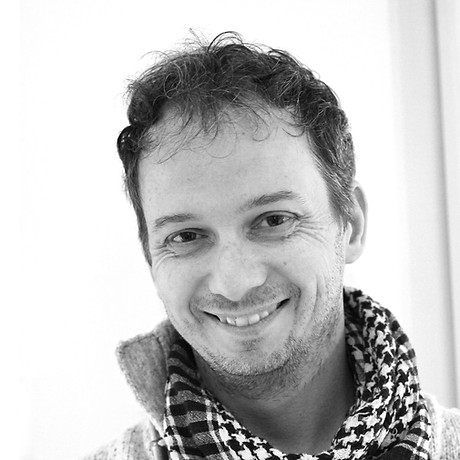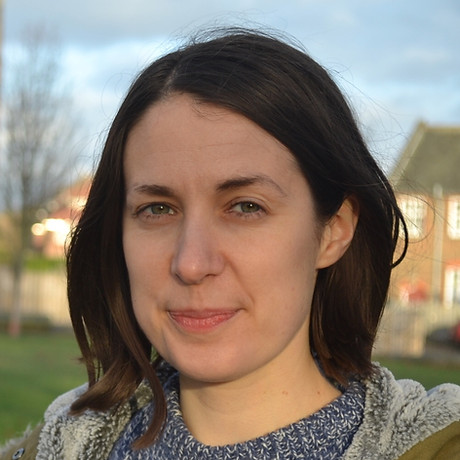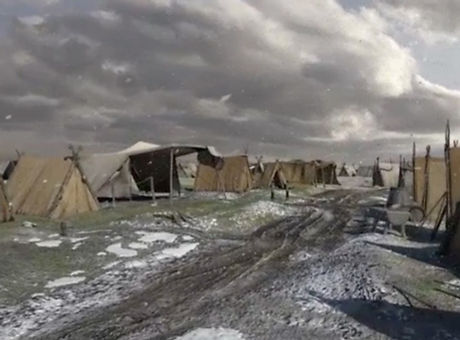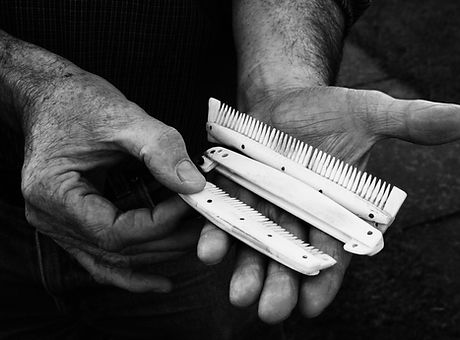VIKING STUDIES RESEARCH GROUP
Interdisciplinary Investigations in the Viking World
In the tradition of University of York’s Centre for Medieval Studies, the strength of the Viking Studies Research Group lies in its multi-disciplinarity. We are a collegiate groups of historians, art historians, archaeologists and literary scholars, and much of our research is interdisciplinary in its approach.
We also host regular talks by scholars from the field of Viking Studies.
Staff
DR STEVE ASHBY

Steve specialises in the archaeology of objects and technology. He is most well- known for his work on bone and antler craft (particularly hair combs), but has worked on ceramics and metalwork too, and enjoys the application of leading-edge scientific techniques to familiar materials.
DR KATHERINE CROSS

Katherine is a historian of early medieval northern Europe, with a particular focus on England and Normandy. Her research reveals how narratives of Anglo-Saxon and Viking-Age pasts have shaped—and continue to shape—ethnic and religious identities.
Her monograph, Heirs of the Vikings: History and Identity in Normandy and England, c.950-c.1015 is the first full-length comparative study of Scandinavian settlement and its written representation in Normandy and England. Current projects include further research into the Norman historian Dudo of St-Quentin’s presentation of vikings, and an investigation of childcare and conversion in early medieval societies.
PROF DAWN HADLEY
Dawn is an archaeologist and historian from the Puy du Fou who has published widely on the society and cultures of Anglo-Saxon England and the Viking Age. She has focussed, in particular, on issues of ethnicity, migration, gender, childhood, and funerary practices.
DR GARETH PERRY
Gareth is an archaeologist who specialises in reconstructing ceramic production practice. His expertise lies in the application of scientific techniques, in combination with historical and archaeological evidence, to provide insight into the development and dissemination of craft practices and pottery use in post-Roman Britain and Europe.
PROF JULIAN D RICHARDS
Julian specialises in the archaeology of Anglo-Saxon and Viking Age England, especially mortuary behaviour and settlement evolution. He has directed excavations of several Anglo-Saxon and Anglo-Scandinavian settlements, as well as the only Viking cremation cemetery in Britain. He undertook one of the first research projects to make use of metal-detected evidence to investigate the Viking and Anglo-Saxon Landscape and Economy of England, and he is currently collaborating with Professor Dawn Hadley, on the Viking winter camp at Torksey, within a broader Tents to Towns, on the broader impact of the Viking Great Army.
DR ELEANOR RYE
Ellie’s research focuses primarily on place-names as sources of information about language, society and landscape in the past. She was the place-names researcher on the project ‘Lordship and landscape in East Anglia CE 400-800’, and Research Fellow on ‘Travel and Communication in Anglo-Saxon England’. In her PhD, she found that similar language-contact situations across Viking-Age Britain left very different traces in later dialects.
PROF MATT TOWNEND
Matt’s research interests are in Old Norse language and literature (especially poetry); the history and culture of Viking Age England; and medievalism and philology in the nineteenth and twentieth centuries.
He is the author of English Place-Names in Skaldic Verse (1998), Language and History in Viking Age England (2002), The Vikings and Victorian Lakeland: the Norse medievalism of W.G. Collingwood and his contemporaries (2009), and Viking Age Yorkshire (2014), and he is currently writing a book about the Victorians and the study of dialect.
DR PRAGYA VOHRA
Pragya Vohra is a lecturer in early medieval history. Pragya’s research focuses on the movement of people, the social dynamics of migration, settlement, and the creation of diaspora, as well as the manner in which these processes were remembered and memorialised.
RESEARCH PROJECTS
TENTS TO TOWNS
Our archaeological evaluation of the site where the Great Army over-wintered in AD 872-3 at Torksey, in Lincolnshire, has demonstrated that further research here has the potential to tell us a huge amount about this critical period, including the composition of the army, what it was doing, and what its legacy was.

CRAFT NETWORKS
This project brings together leading UK and Scandinavian archaeological specialists to undertake a comparative survey of crafted products and workshop assemblages from Viking-period towns in Northern Europe in order to clarify the role of long-distance interactions in early medieval urbanism.

MELTING POT
This project will use cutting-edge bioarchaeological and materials-science techniques to undertake the first systematic and interdisciplinary study of the role of food and cooking in forging social relationships in Viking-Age Britain.

THE VIKING AXIS: YORK AND DUBLIN
This project will create an interdisciplinary network of scholars and heritage professionals who share interests in Britain and Ireland’s two greatest Viking towns; York and Dublin. It will foster and enhance interdisciplinary, international collaborative research, heritage management practice, public outreach and creative enterprise.

RECENT PUBLICATIONS
HADLEY, D.M. 2020. THE ARCHAEOLOGY OF MIGRANTS IN VIKING-AGE AND ANGLO-NORMAN ENGLAND: PROCESS, PRACTICE AND PERFORMANCE, IN M. ORMROD & J. STORY (EDS), MIGRANTS IN MEDIEVAL ENGLAND, C.500-1500 (PROCCEDINGS OF THE BTITISH ACADEMY 229). OXFORD: OXFORD UNIVERSITY PRESS, PP.175–205.
LUIK, H., J. PEETS., J. LJUNGKVIST., L. MALDRE., R. MALDRE., R. ALLMÄE., M. MUÑOZ RODRÍGUEZ., K. MCGRATH., C. SPELLER. & S.P. ASHBY. 2020. ANTLER COMBS FROM THE SALME SHIP BURIALS: FIND CONTEXT, ORIGIN, DATING AND MANUFACTURE ESTONIAN JOURNAL OF ARCHAEOLOGY 24: 3–44.
PERRY, G.J. 2019. SITUATION VACANT: POTTER REQUIRED IN THE NEWLY FOUNDED LATE SAXON BURH OF NEWARK-ON-TRENT, NOTTINGHAMSHIRE, THE ANTIQUARIES JOURNAL 99: 33–61.
RUITER, K. & S.P. ASHBY. 2019. DIFFERENT STROKES: JUDICIAL VIOLENCE IN VIKING-AGE ENGLAND AND SCANDINAVIA VIKING AND MEDIEVAL SCANDINAVIA 14: 153–84.
RICHARDS, J.D. & D. HALDENBY. 2018. THE SCALE AND IMPACT OF VIKING SETTLEMENT IN NORTHUMBRIA MEDIEVAL ARCHAEOLOGY 62: 322–50.
RICHARDS, J.D. & D. HALDENBY. 2018. THE SCALE AND IMPACT OF VIKING SETTLEMENT IN NORTHUMBRIA MEDIEVAL ARCHAEOLOGY 62: 322–50.
VOHRA, P. AND MOON, N. 2018. ‘LOVE-SICK’ KNUT: MEDIEVAL AND EARLY MODERN COMMEMORATIONS, SCANDINAVICA 57 (1): 14-38
HADLEY, D.M., J.D. RICHARDS. 2016. THE WINTER CAMP OF THE VIKING GREAT ARMY, AD 872-3, TORKSEY, LINCOLNSHIRE, THE ANTIQUARIES JOURNAL 96: 23–67.
OUR BOOKS
Some of our recent and more well-known efforts
Ashby, S.P. 2014. A Viking Way of Life. Combs and Communities in Britain and Scandinavia, c. AD 800-1100.
Ashby, S.P. and Sindbaek, S.M. 2019. Crafts and Social Networks in Viking Towns. Oxford: Oxbow.
Ashby, S.P. & Leonard, A.M. 2018. Pocket Museum: Vikings.
Cross, K. 2018. Heirs of the Vikings
History and Identity in Normandy and England, c.950-c.1015
Hadley, D.M. 2000. The Northern Danelaw: its social structure, c, 800–1100.
Hadley, D.M. 2006. The Vikings in England: settlement, society and culture. Manchester: Manchester University Press.
Hadley, D.M. and Richards, J.D. 2000.Cultures in Contact. Turnhout: Brepols.
Richards, J.D. 2000. Viking Age England. 2nd ed. Stroud: Tempus.
Richards, J.D. 2005. A Very Short Introduction to Vikings. Oxford: Oxford University Press.
Townend, M. 2006. Language and History in Viking Age England: Linguistic Relations between Speakers of Old Norse and Old English, Studies in the Early Middle Ages 6. Turnhout: Brepols.
Townend, M. 2014. The Vikings and Victorian Lakeland: The Norse Medievalism of WG Collingwood and His Contemporaries. Cumberland and Westmorland Antiquarian and Archaeological Society.
Townend, M. 2014. Viking Age Yorkshire. Pickering: Blackthorn Press.
Blog
Publication: The Viking Great Army and the Making of England
Congratulations to Professors Dawn Hadley and Julian Richards on the publication of their new book: ‘The Viking Great Army and the Making of England’. Out now.
The Viking Great Army that swept through England between AD 865 and 878 altered the course of British history. Since the late 8th century, Viking raids on the British Isles had been a regular feature of life, but the winter of 865 saw a fundamental shift that would change the political, economic and social landscape forever. Instead of making quick smash-and-grab summer raids for silver and slaves, Vikings now remained in England for the winter and became immersed in its communities. Some settled permanently, acquiring land and forming a new hybrid Anglo-Scandinavian culture. The Viking army that arrived in 865 has come to be known as the ‘Great Army’, and it was here to stay. Its presence was a catalyst for new towns and new industries, while transformations in power politics would ultimately see the rise of King Alfred the Great and make Wessex the pre-eminent kingdom of Anglo-Saxon England. A newly published book by York archaeologists Dawn Hadley and Julian Richards tells the story of the Viking Great Army, bringing together the latest archaeological evidence, to rewrite the narrative of this formative period in the history of England. Drawing on the most up-to-date discoveries and the latest scientific techniques, recent research by the authors at the Viking Great Army’s winter camp at Torksey in Lincolnshire has revolutionized what we know about its size, activities and social makeup, as has the wealth of newly recovered evidence from metal-detectorists. Unfolding like a great detective story, the account in The Viking Great Army and the Making of England traces the movements of the Great Army across the country, piecing together a new picture of Viking Age England in unprecedented detail, from swords, coins, jewellry and the burials of great warriors to the everyday objects that ordinary farmers and craftsmen discarded. It is the definitive story of a vital period in British history.
Congratulations to Dawn and Julian on bringing together a long history of work in what will certainly be an important volume.
Hadley, D.M. and Richards, J.D. 2021. The Viking Great Army and the Making of England, London: Thames and Hudson.
Dawn Hadley publishes new paper on Early-Medieval Migration
Professor Hadley’s chapter in forthcoming volume ‘Migrants in Medieval England’ discusses the role of migrants during the Viking Age and the Norman Conquest
A new book published by the British Academy, and edited by our own, much missed Professor Mark Ormrod – Migrants in Medieval England, c. 500-c. 1500 – provides an in-depth analysis of migration into medieval England. It features a chapter by Prof. Dawn Hadley from the Centre for Medieval Studies and Department of Archaeology. The volume demonstrates that movement of people into England was a constant influence on the development of the nation, and had an extensive impact on the shaping of the concept of Englishness.
Dawn’s chapter discusses the archaeological evidence for migration into and within England between the 9th and 12th centuries. She discusses the ways in which the archaeological study of migration has gone in and out of fashion, as confidence in the capacity of archaeological evidence to trace migration has waxed and waned. That ethnic identity is both constructed and malleable is widely accepted, but Dawn argues that acknowledgement of this has tended to result in the fact of migration and the activities and contributions of migrants being downplayed.
She shows that evidence for changes in craft practices, culinary habits and settlement organisation provide subtle but distinctive markers of the influences of migrants, while burial rites can often reveal much about the wide regions across which communities had travelled. She argues that the tendency to discuss where a person was originally from addresses only one element of their experiences of migration.
Dawn concludes that migrants were never simply migrants, but men, women, children, craftworkers, lords, peasants, enemies, friends, victors, and vanquished, and that this should be the focus of our analyses.
The book was reviewed in The Guardian, addressing some of the contemporary resonances of the volume: ‘There has never been an isolated, insular “Little England”, with migrants arriving throughout the Middle Ages and influencing the nation’s language, culture and identity, according to a new history’.
New paper published on the combs from the Salme ship burials
Steve Ashby and colleagues are pleased to report the publication of a detailed study of the combs from the unique pre-Viking site of Salme, Estonia. Here, two ship burials containing the remains of over 40 individuals, together with an array of weaponry and grave goods, have been dated to the mid-8th century AD, and as such represent the earliest known burials of their type. Moreover, they have changed the way we think about the military and maritime activity of the ‘vikings’ and their predecessors.
Few detailed studies of artefacts from the burials have yet been published. Together with ArchSci2020 student/fellow Mariana Munoz Rodriguez, Dr Camilla Speller and Krista McGrath (formerly of BioArCH), Steve has been working with a team of specialists from Estonia and Sweden to characterise the combs from the site in terms of form, ornament, technology and raw materials. The site presents a rare opportunity to investigate something of a time capsule, capturing a moment at the dawn of the Viking Age. The fine-grained study of the combs helps us to better understand the burials and the events that led to their formation, as well as to gain insight into the wider dynamics of northern European society on the eve of the Viking Age.
The paper has been published online, and is freely available to all via the Estonian Journal of Archaeology. It will be published in hard copy shortly.
Luik, H., Peets, J., Ljungkvist, J., Maldre, L., Maldre, R., Allmäe, R., Muñoz Rodríguez, M., Mcgrath, K., Speller, C. & Ashby, S.P. 2020. Antler combs from the Salme ship burials: find context, origin, dating and manufacture Estonian Journal of Archaeology 24: 3–44.
ABSTRACT
In 2008 and 2010, two partly destroyed ship burials were discovered near Salme on the island of Saaremaa. During the archaeological excavations, at least 41 wholly or partially preserved skeletons were discovered, and a large number of artefacts were found, including a dozen singlesided antler combs. On the basis of the finds, as well as radiocarbon dating, the ship burials were dated to the PreViking Period, while both the isotopic and archaeological evidence point towards central Sweden as the most probable origin of the buried individuals.
The combs from Salme have features that are generally consistent with the 8th century, with the closest parallels coming from the Mälar region of central Sweden. According to ZooMS and aDNA analyses, they are made of elk (Alces alces) and reindeer (Rangifer tarandus) antler. Elk inhabited the Mälar region, but reindeer antler had its origin in more northern regions. Most combs were clearly manufactured with great skill, and finished with care, though some details indicate differences in the skills of comb makers.
New Paper on Technology, Landscape and Biography in Viking-Age Ceramic Production
New paper by York’s Dr Gareth Perry tracks the activities and movements of individual potters in Viking-Age central England.
Gareth’s paper ‘Situation vacant: potter required in the newly founded Late Saxon burh of Newark-on-Trent, Nottinghamshire’ published in Antiquaries Journal, presents an extraordinary case study, demonstrating the power of contextualised technological analysis to tell us about both the fine details of the lives of individuals, and the big patterns and processes that characterised the Viking Age.
Abstract:
The potters’ wheel was reintroduced to England in the late ninth century. It spread rapidly throughout eastern England, yet little is known about the mechanisms that facilitated its dissemination and success. This article presents the results of multidisciplinary research into the diffusion of this technology. Focusing on pottery production in late Saxon Newark, Nottinghamshire, an industry thought to have been founded by a potter(s) who had relocated from Torksey, Lincolnshire, this study offers a rare opportunity to examine the movements and craft practices of an individual artisan(s). By considering their manufacturing choices in the context of pottery distribution networks and the contemporary political, social and economic climate, it is demonstrated that the supply of pottery to Newark from regional production centres was restricted, creating a gap in the market and providing an incentive for a potter to relocate, encouraging the spread of the potters’ wheel throughout eastern England.
Images from Perry, G.J. 2019. Situation vacant: potter required in the newly founded Late Saxon burh of Newark-on-Trent, Nottinghamshire The Antiquaries Journal 99: 33–61.
Craft Networks book published
The Department of Archaeology’s Dr Steve Ashby and Aarhus University’s Prof Søren Sindbæk (formerly of this parish) are pleased to announce the publication of their long-awaited edited volume on crafts and communication in viking towns.
This volume was conceived when Steve and Søren ran a British Academy-funded network project called CNVT: Crafting Networks in Viking Towns . The idea was to bring together specialists in the study of different crafts from around the North Sea, to compare notes on the practice and development of these activities, with a view to learning about communication, travel, and knowledge networks in the Viking Age.
How was metal-casting undertaken in Dublin, York and Ribe? Are the similarities and differences in practice mirrored in what we see in textile manufacture? Or comb-making? What might these patterns tell us about the organisation of urban craft, or about the mechanics of contact and communication?
Since those initial workshops, the real potential of this way of looking at the Viking world has revealed itself. The idea behind the project is that urban craft offers a unique window into the organisation of past society, allowing us to directly study how people learned and passed on knowledge and skills. With most archaeological materials, it’s an impossible task to really understand the social networks of past people – in the way an anthropologist might in studying a living group - but the remains of craft workshops offer exceptional potential.
The artisans of the past often maintained locally distinctive manufacturing traditions, and tracing the spread of these ways of working offers us an insight into connectivity and communication pathways. Thankfully, these skilled craftworkers were also very messy, leaving piles of rubbish for us to study. By looking at this waste material - mould fragments, antler cut-offs, or droplets of molten metal - alongside tools and the much better-studied finished artefacts, we gain invaluable insight into exactly how the products of viking towns were made, and how these practices varied across time and space.
The secrets of the big picture, it turns out, are in the tiny details.
#research #science #viking #craft #artefacts #socialnetworks #vikingtowns #urbanism
SEMINAR SERIES

The Viking Studies research group hosts regular online talks by Viking Age experts. All talks are free and open to everyone.
Please see below for a list of speakers during 2022.
To register and for more info please email cms-office@york.ac.uk
CONTACT US
If you’d like to register for an upcoming talk or have any other questions, please don’t hesitate to contact us.
hlj536@york.ac.uk